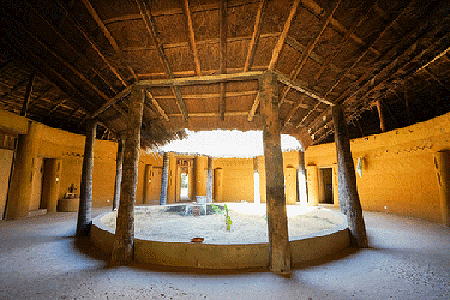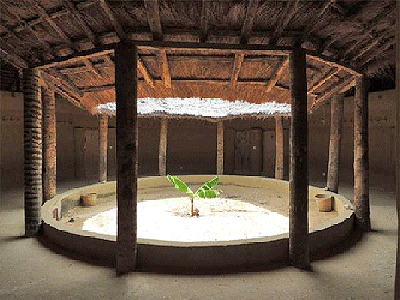
Jola Compluvium / Impluvium House


Jola (or Diola) culture traditional house type is located in coastal rain forest Casamance Region of Senegal, western Africa; it evolved from ancient times, and is still in use today. The mud brick walled circular plan consists of a ring of rooms surrounding a central court, the impluvium, accessed by passages from the outside. The roof form inverts at a ridge, with slopes to the outside and the inside impluvium of the house. The opening of the inside sloping roof, the compluvium, results in rainwater being collected for drinking in the central low-walled cistern. Employing the principle of evaporative or "swamp" cooling, water in the central cistern evaporates, and in the process transfers heat from the house air to evaporate the water, giving in return cool moisture-laden air inside the house. The thatch roof shades the thick mud walls from solar heat gain, increasing their heat absorption and cooling effect on the interior house air. Entrance to the ring of rooms is from the central court, thereby trapping and conserving the coolness—a sophisticated example of sustainable architectural design principles. Compluvial / Impluvial architecture is also used by the Igbo, Yoruba, and Edo cultures of southern Nigeria, and was used as well as by the ancient Greeks and Roman Pompeii.
Elevation is close Atlantic coastal sea level.
Material: thick walls of sun dried mud bricks and stabilized mud plaster, wood roof structure with thatch roofing.
Data for CG model:
1. Bourdier, Jean-Paul, and Mink-ha, Trinh T., 2011; Vernacular Architecture of West Africa,
A World in Dwelling, published by Routledge.
2. https://en.wikipedia.org/wiki/Impluvium_(house)




